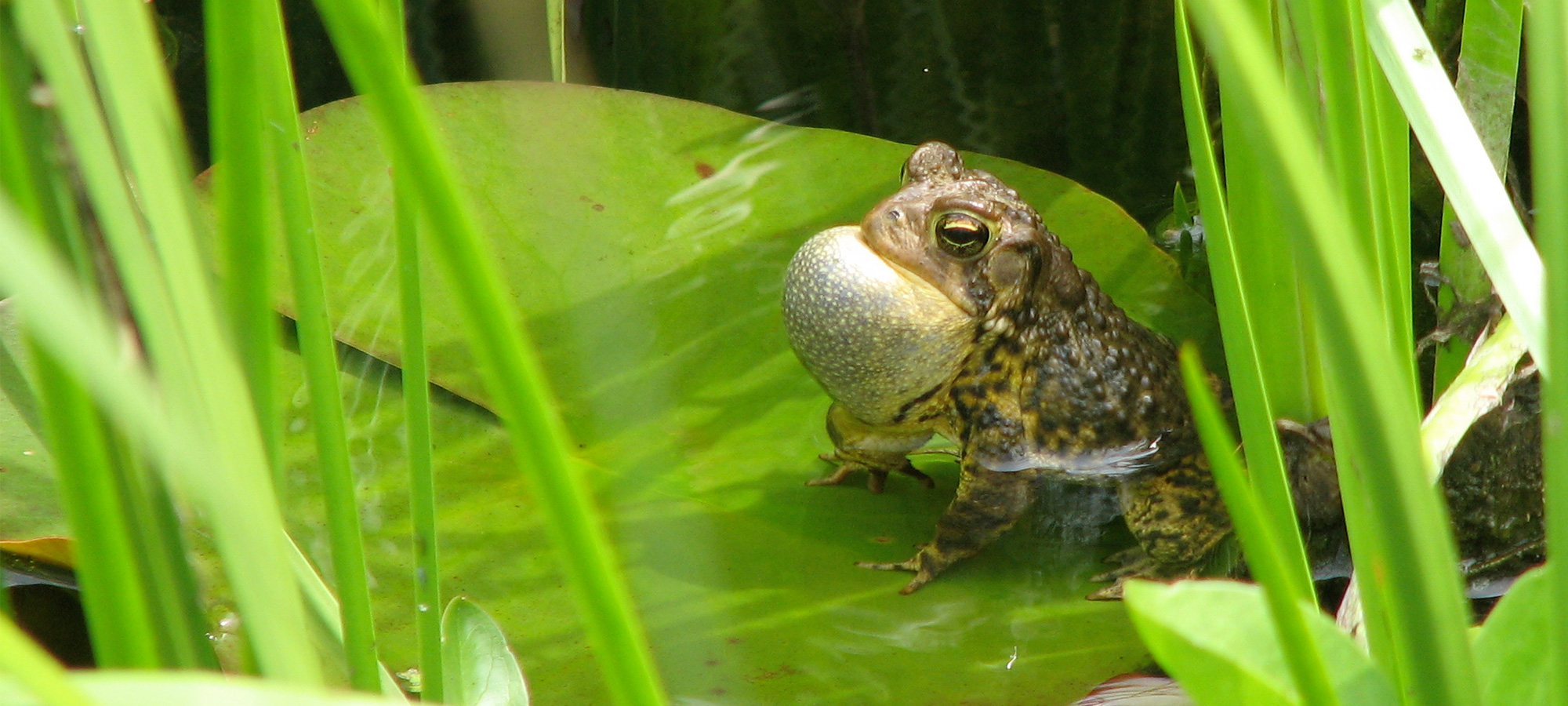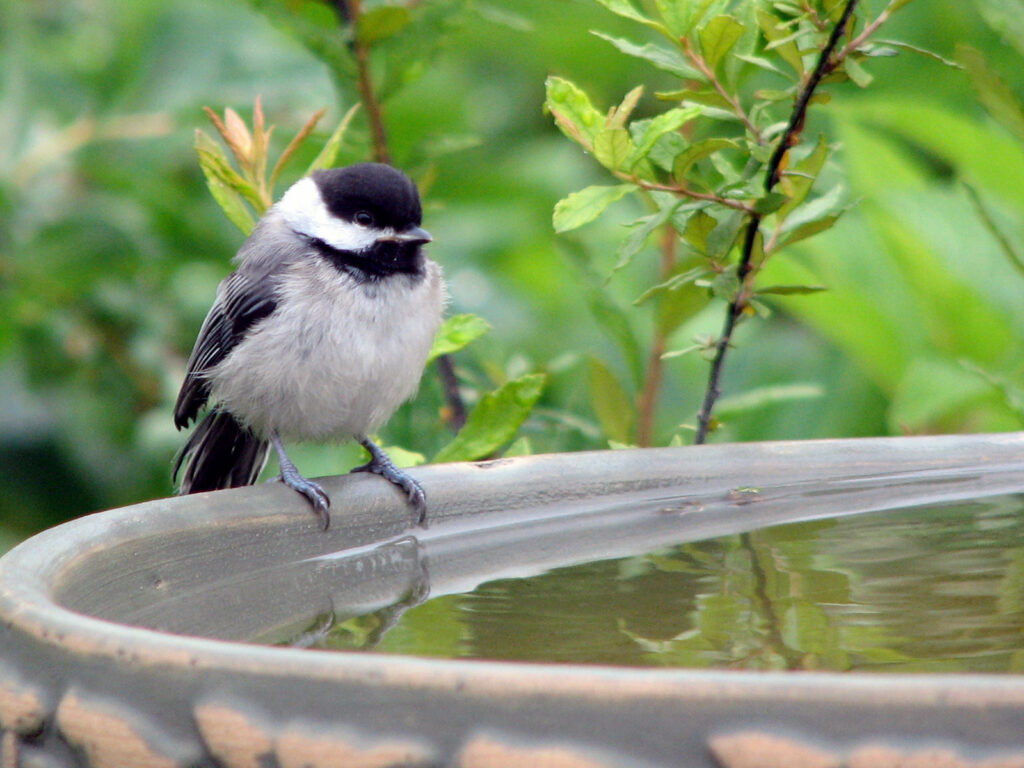
People think first of birds and birdbaths when they think of supplying water in a habitat garden, but every kind of creature needs water.
Birdbaths are one way to provide water for some creatures.
Except in winter we now provide water with our pond and stream and also with our wildlife pond.
Birds
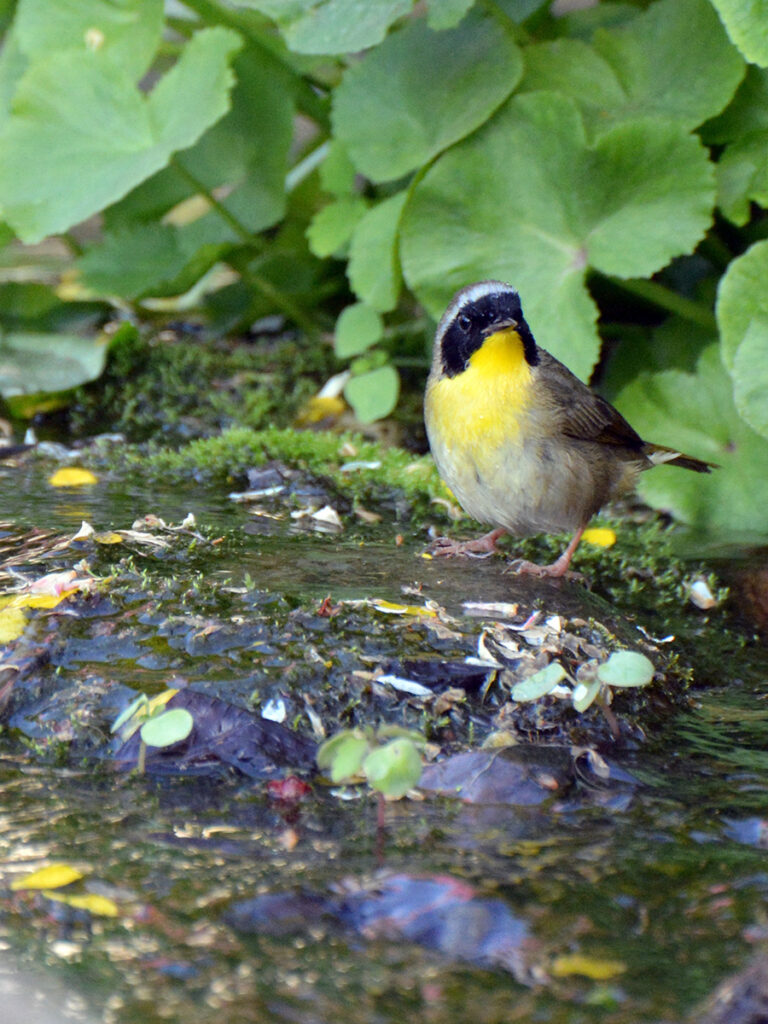
Besides the many resident birds that enjoy the pond and stream in spring, summer, and fall, we’ve been thrilled to see the many migratory birds — especially warblers, such as this yellowthroat warbler — attracted to our water features as they pass through in the spring and fall.
They probably hear the sound of the water rushing down the stream.
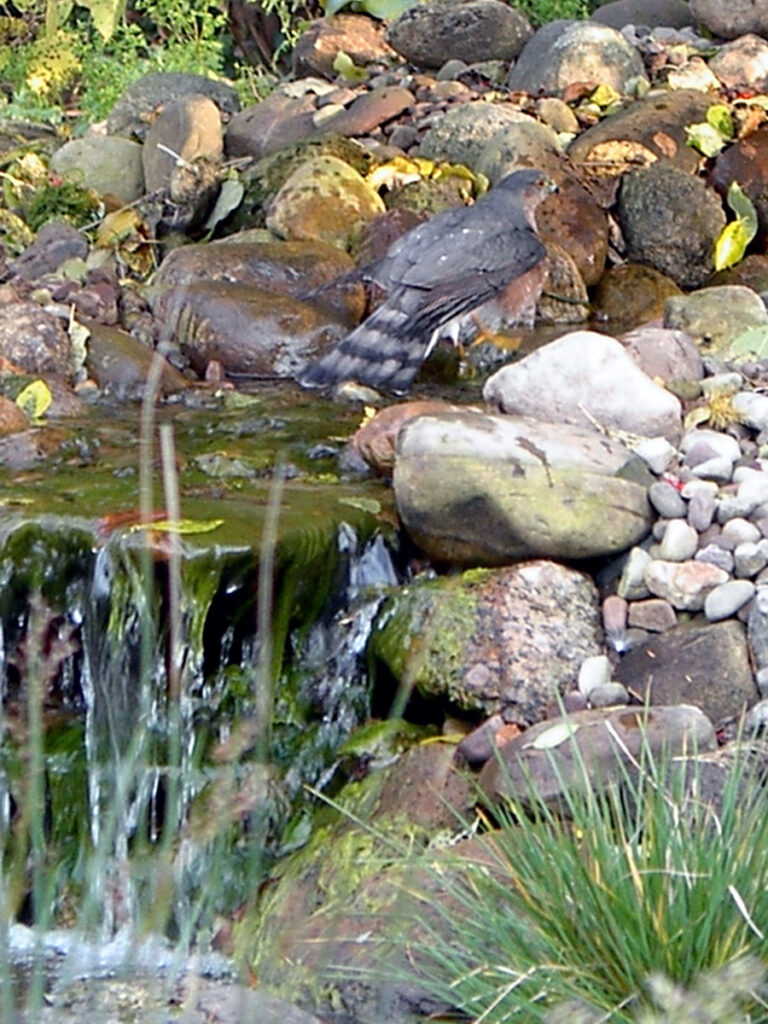
This sharp-shinned hawk took a very long, very leisurely bath — at least ten minutes. He definitely had the stream to himself!
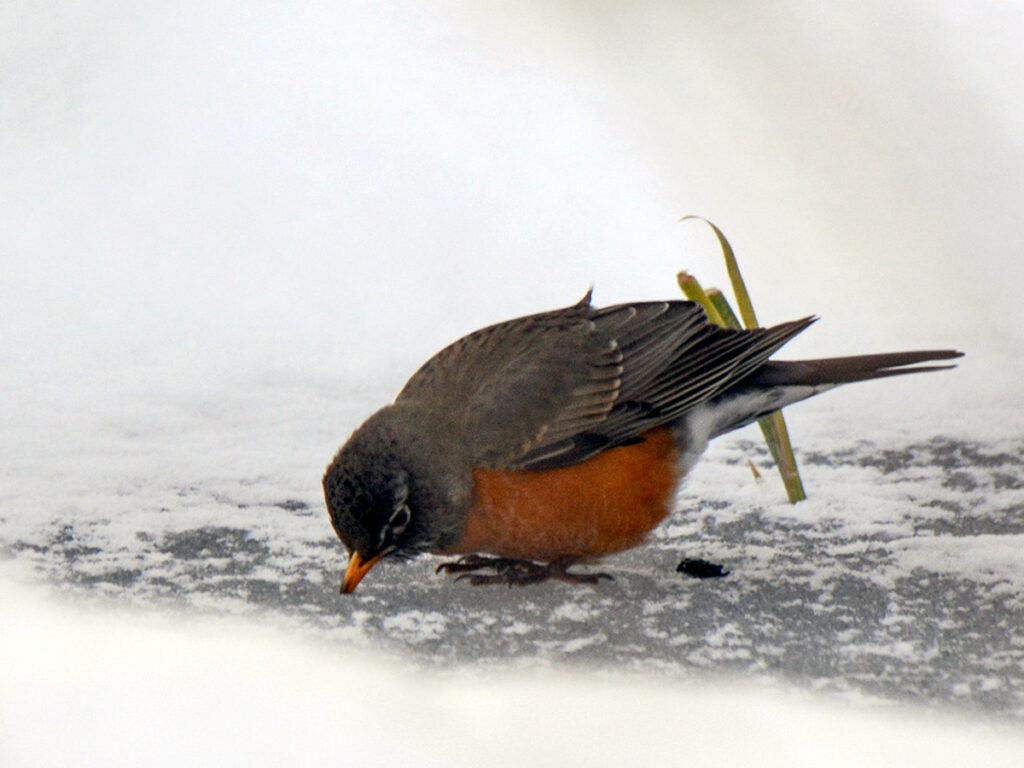
Birds need water in winter, too. This robin, on a very cold day in March, was getting some water on the surface of our frozen pond.
Here’s more about providing water in winter.
Amphibians
When we first built our pond, we were most looking forward to having frogs. Although everything I read said that they’d surely find any body of water, they never arrived on their own.
Eventually someone gave us a bunch of little green froglets they had rescued from their swimming pool.
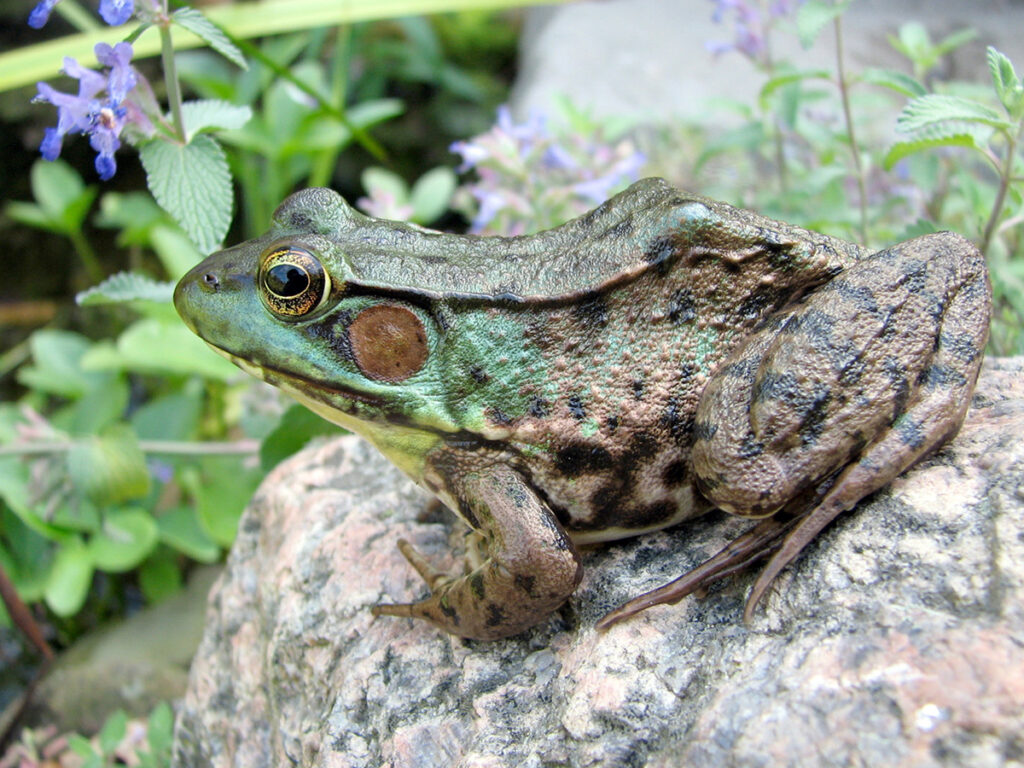
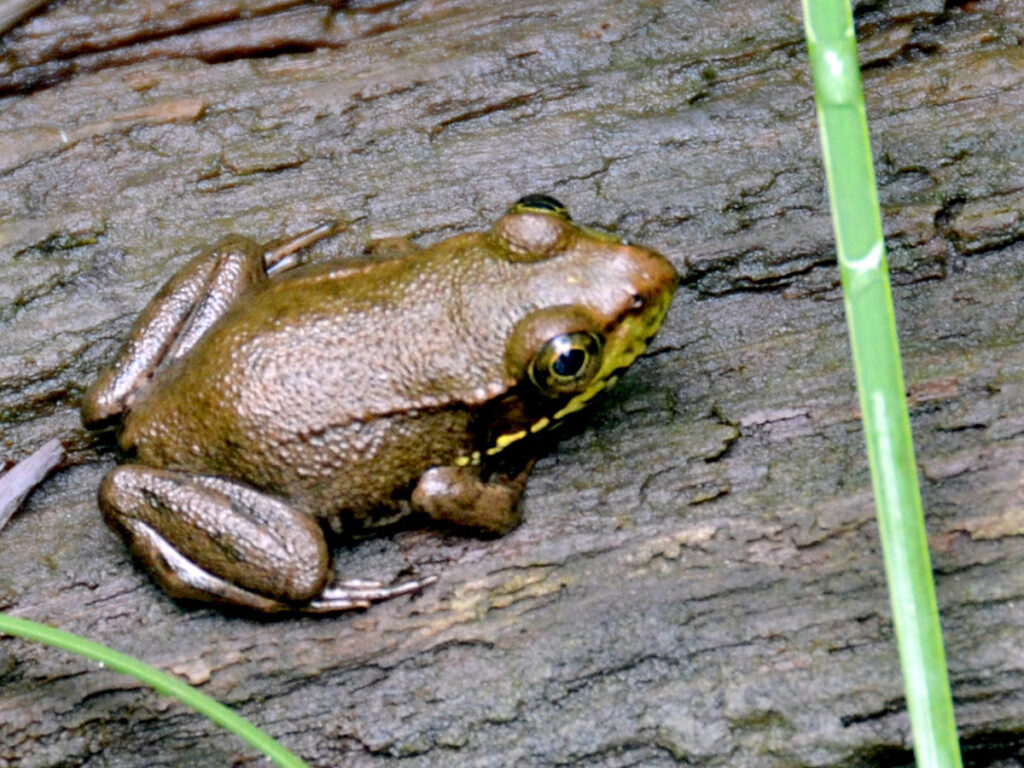
Although I’ve read that you should never to move grown frogs, only tadpoles, these were really “rescue frogs” since, sadly, they all die once swimming pool owners add chlorine. (This is a common occurrence in suburbs, which have lots of swimming pools, but very few ponds for wildlife.) Fortunately, most stayed, thrived, and even laid eggs. They survived the first winter in our iced-over pond, but the next year all the adults died, leaving only the tadpoles which had overwintered.
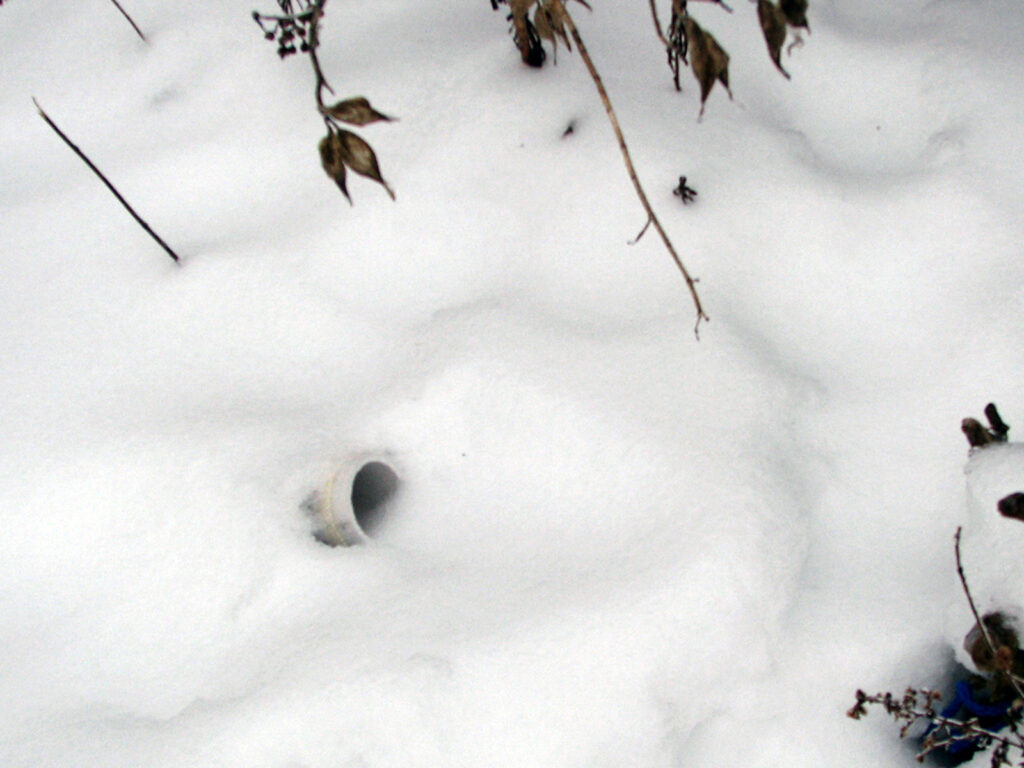
Besides enjoying our frogs all summer, we felt a responsibility to help them overwinter. We also wanted to do this without a large amount of electricity. One winter (’09) we experimented with putting a PVC pipe in the pond and checking it each morning to see if it was still open. If it wasn’t, I poured some warm water down the pipe to maintain an air hole. It didn’t help, and eventually all our frogs died. Our pond just isn’t deep enough for frogs to reliably overwinter.
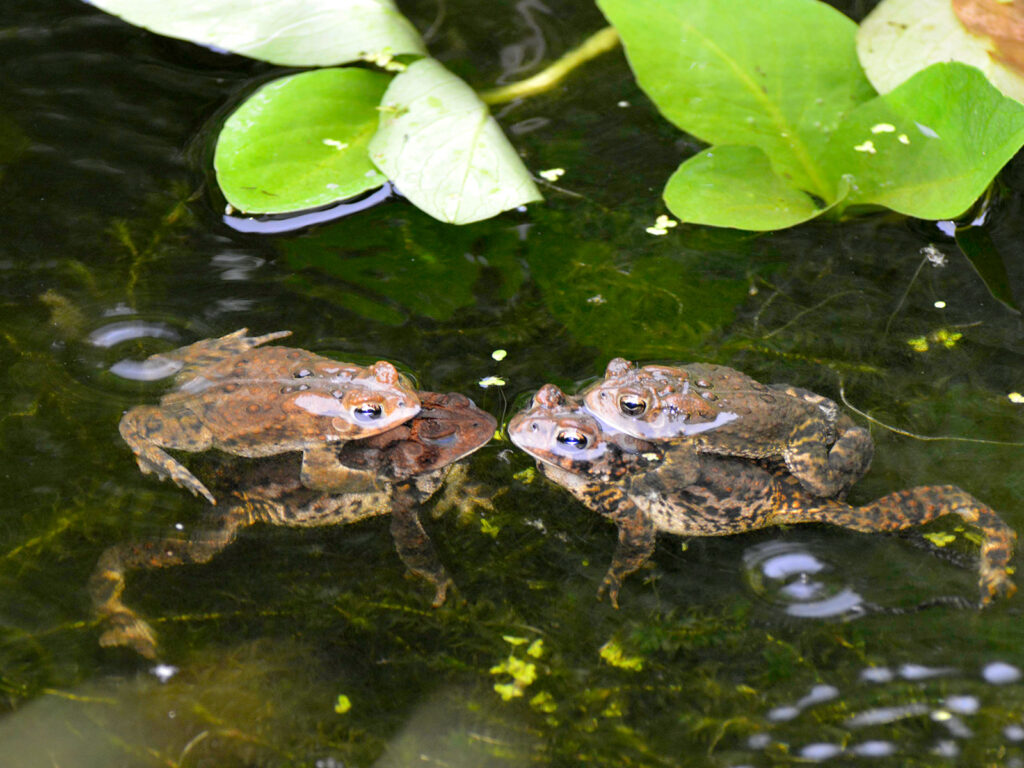
Toads, unlike frogs, overwinter in soil, not water, but they use our ponds as a mating place. They lay literally thousands of eggs each spring, and the tadpoles live in our ponds until they become adults a few weeks later.
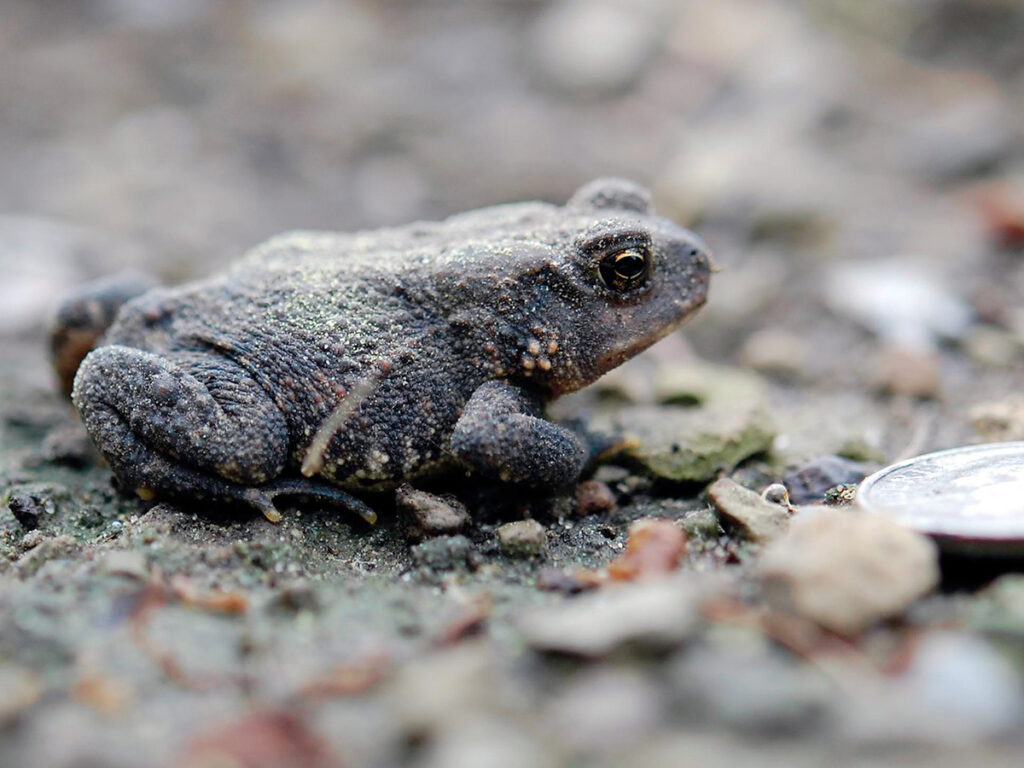
This little toad is probably a second year toad, but I’m not sure. (Note the dime next to it for scale.)
Being nocturnal and land-based, we seldom see them again until the following spring unless we happen to disturb one during the day.
But they’re there in our yard, helping control slugs and other unwelcome creatures.
Insects
Besides frogs, we’re also interested in water-based insects. We especially enjoy the damselflies and dragonflies. (And I learned that there’s a difference between these.)
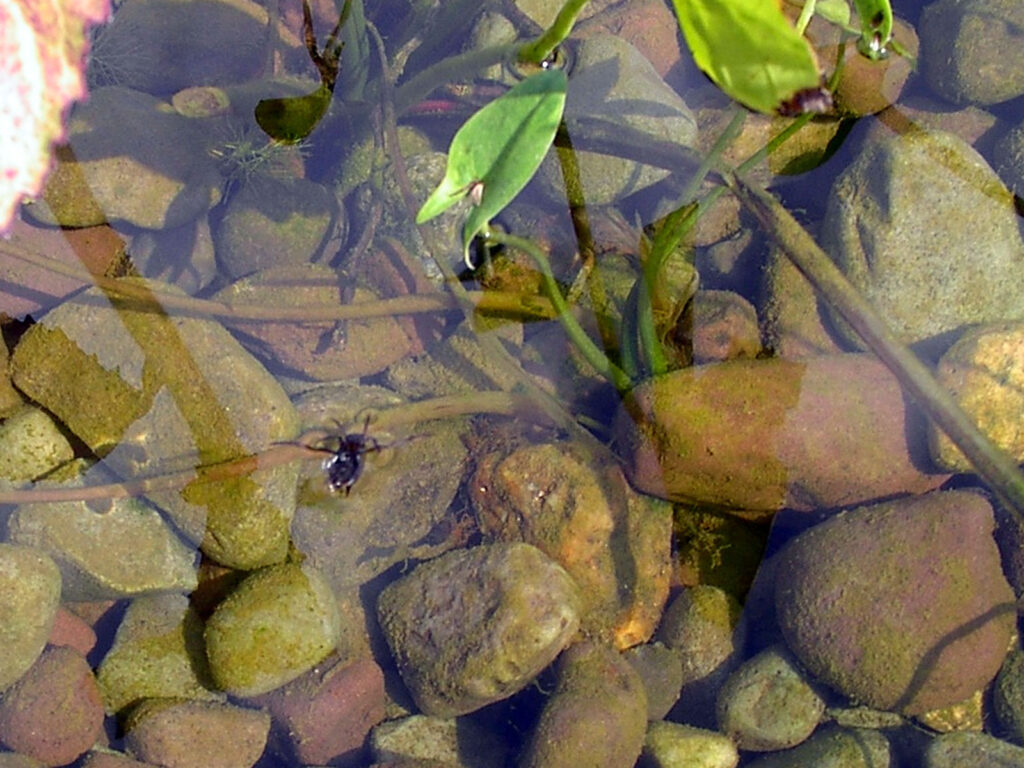
We also find the other water insects, such as water boatman, interesting. They’re small, but fascinating. I like watching them “row” around their “lake.”
Mosquitoes? They haven’t been a problem. This surprised us. First, the water in our pond and stream is constantly circulating, which is probably enough to prevent them from breeding, but second, we have lots of mosquito-eating creatures around — birds, dragonflies, frogs, toads, other insects. For whatever reason, we just haven’t had mosquitoes. In fact, we seem to have fewer than we had in our pre-habitat garden days!
Mammals
I’ve seen squirrels and chipmunks use our ponds and streams to get a drink, but not to bathe. (Perhaps they “bathe” by licking themselves like cats do?)
I assume that nocturnal creatures in the neighborhood, such as raccoons and skunks, use these water sources, too, though I’ve never seen them do so.
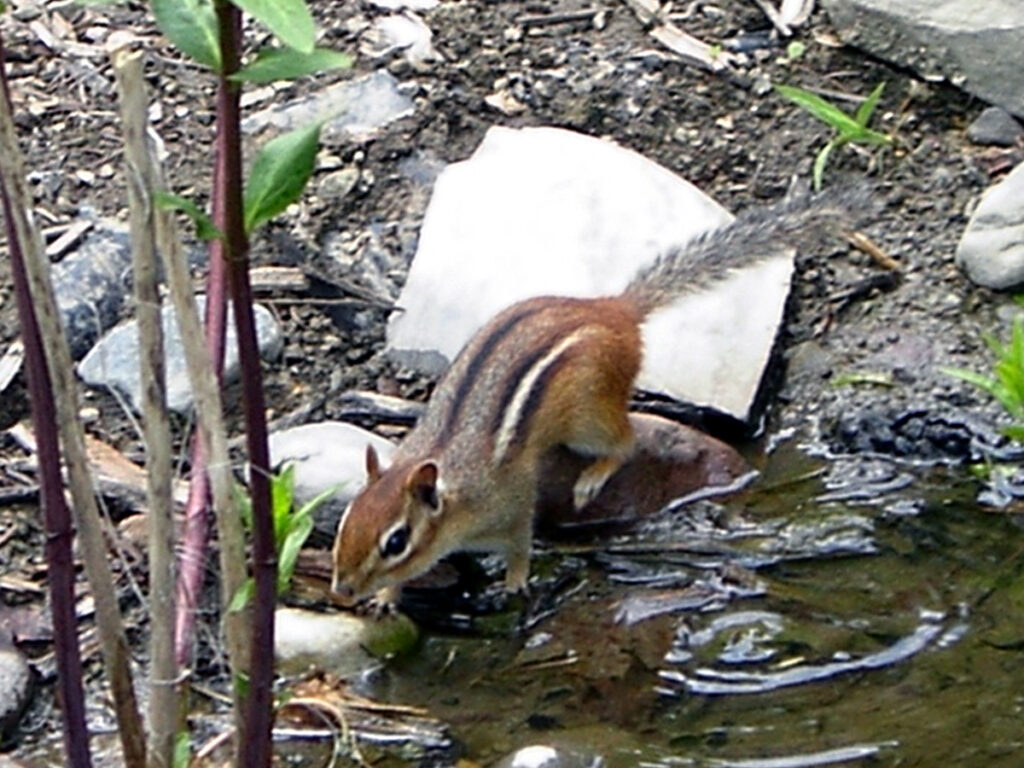
Fish
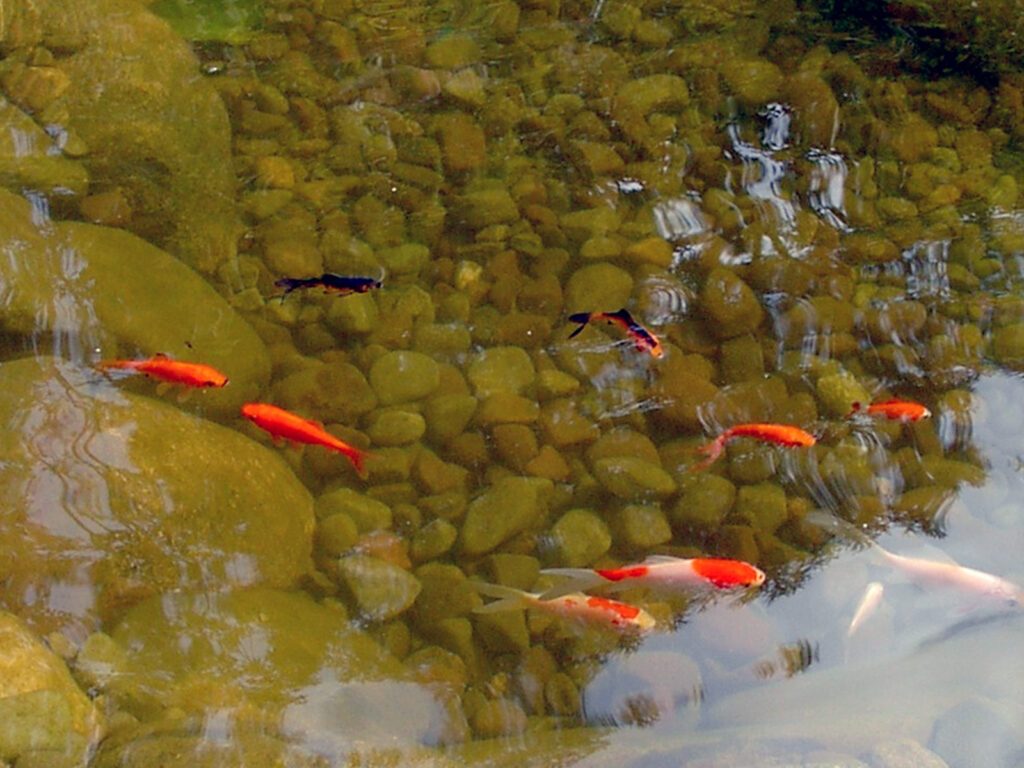
We initially didn’t want fish, but after buying them (6-for-a-dollar feeder goldfish), we really enjoyed them. They even survived the first few winters with an iced-over pond.
Eventually, though, we suspected they were eating the frog and toad eggs, as well as, we assume, dragonfly eggs. The goldfish were also multiplying. What to do? As a non-native fish, we definitely would NOT add them to local streams, and we couldn’t bear to kill them.
But nature took care of the problem. After one especially icy winter, we found they had all died. What a relief! We haven’t replaced them, and even though the Aquascape system says fish are essential, we haven’t found any problem without them.
Another reason for not replacing them: This photo was taken early on before water plants developed. The ponds are much more interesting now, so we don’t miss these artificially-introduced, non-native goldfish.
Resources
- Treehugger:
- How [swimming] pool owners can save the lives of frogs (and other creatures)
- Humane Gardener:
Reflections
If you want to stock your backyard pond with aquatic plants, fish, frogs, or other creatures, make sure to use only species that are native to your area. (Beautiful as they are, exotic fish such as Koi are not a good idea; they will attract predators and may expose native wildlife to exotic diseases.)
~ Laura Erickson, 101 Ways to Help Birds, p. 154
When your garden features a pool or pond, you’ll discover all sorts of “neighbors” you never knew you had. In late spring, dragonflies will appear around almost any quiet body of water. These aerial acrobats of the insect world — with wonderful names like the green darner and the circumpolar bluet — provided engineers with the original idea for the helicopter. Like tiny replicas of those machines, they bob up and down, zipping across the water with glistening wings that blur in the sunlight. But these are only the first insects to arrive. Soon, there will also be damselflies, water striders, and a host of brilliant butterflies and moths, all attracted by the water.
~ Craig Tufts and Peter Loewer, Gardening for Wildlife, p. 78

